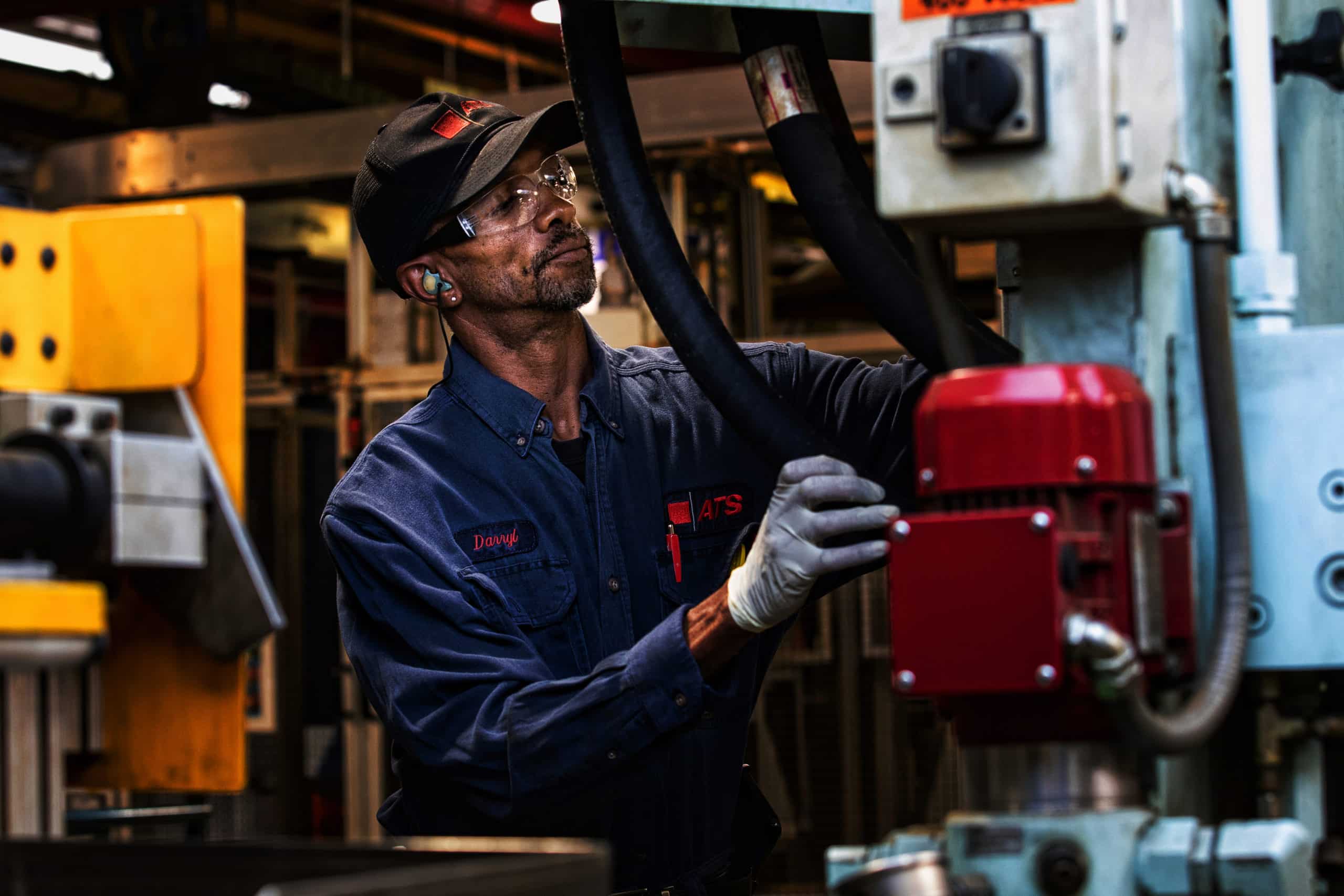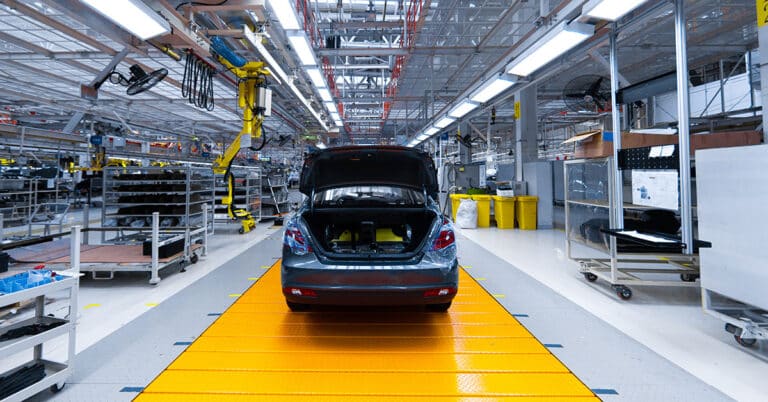Skilled labor service companies can solve supply chain problems for manufacturers while improving their bottom line.
If your supply chain management function is like most, the landscape has changed dramatically due to risks that were uncovered during COVID-19. For most manufacturers today, the bulk of the time and energy is focused on managing the “direct” side of the industrial supply chain, leaving the “indirect” side of the business lower in priority. This means opportunities for savings in critical areas such as skilled labor services are being missed.
This article identifies wastes and hidden costs often seen in the indirect supply chain seen across many companies and industry segments, which can negatively impact the bottom line. It also offers solutions to these indirect supply chain challenges. First, what is meant by the term “indirect” as it applies to a traditional manufacturing supply chain? “Indirect goods” are the tangible and intangible items needed to operate the business but do not become part of the produced products. Services likely comprise a significant portion of your total indirect spend. This includes all types of industrial contractors who perform necessary functions to support facilities, systems and equipment. In most cases, these services are sourced from specialized service providers, general contractors and original equipment manufacturers (OEMs). Common examples include rigging services for moving equipment, contractors for construction projects and automation integrators who automate production tasks or increase the throughput, quality, safety or reliability of a production asset.
A growing trend is the use of contractors for supplemental maintenance staffing. With limited resources — whether due to skills gaps, unfilled positions, turnover or some other reason — a variety of work is being contracted out to multiple staffing suppliers. The primary driver for this trend is the current skilled labor gap in U.S. manufacturing. Using contractors to fulfill short-term needs usually is an easy expense to justify, especially when an urgent situation arises due to work that has been postponed. However, COVID-19 has exposed gaps and risks with some contractors being unable to respond and deploy people due to travel restrictions or other COVID-related limitations.
As a result, hiring, training and retaining skilled talent has never been more of a problem — and it is likely to continue for the foreseeable future. This growing source of costs in the indirect supply chain is a prime target for savings and optimization.
Wasteful staffing costs
In many organizations, skilled labor shortages are addressed in a tactical and reactive way. Few organizations have developed a strategy for dealing with these real, expensive problems. It’s not because the supply chain organization is asleep at the wheel. Rather, most often, the situation just builds over time and gets lost due to other competing priorities.

What we see today is that the parameters for what is considered short-term work are changing. It is not uncommon to have contractors from a wide variety of service providers filling these gaps for up to a year. The main problem here is not the time span of the support, but that many companies are executing a series of short-term support agreements, based on relatively high short-term time and material rates, which get extended over and over. In some plants, work is even being subcontracted to third parties with limited oversight by purchasing or plant-level stakeholders. Spending on contracted services also can be one of the leading contributors to “maverick” sourcing by plant-level stakeholders.
This can challenge the efforts of supply chain professionals to have robust standards and process requirements for contracting work. As a result, the following wastes are being introduced into the indirect supply chain of almost every manufacturer in the U.S. today:
- Paying higher rates for short-term support that extends well beyond the original expiration date (weeks turn into months), or is amended with additional positions, with no reduction in the original rate
- Sourcing talent from too many different suppliers, limiting opportunities to leverage the spend, due to rationalizing the belief that the work is so highly specialized that few (if any) alternatives exist
- Paying premium rates for reactive/urgent work, not to mention high travel costs that are non-value-added until a situation escalates to a crisis stage
- Sourcing work at the plant level to local suppliers on an as-needed basis with limited time and attention focused on an enterprise-level strategic solution
- Paying more for higher-level skills than is necessary for the job, or contracting for more labor than is required, due to insufficient time to accurately assess the skills required.
Quantifying the excesses
Let’s break it down by the numbers to get a sense of the magnitude of the impact skilled labor can have on indirect costs:
- Buying skilled labor by the hour is like buying wine by the glass — it’s fine if you are just having a glass or two, but not if you are going to restock your wine refrigerator. Many manufacturers are buying skilled labor by the hour and they are doing it for extended periods of time.
- Time and material rates for hourly labor: $90 to $120/hour
- Time and material rates for longer-term supplemental labor: $65 to $100/hour
- Premium for hourly labor: 13% to 15% (excluding travel expenses).
- Travel and per-diem costs can be significant, especially in areas where manufacturers compete for scarce resources, and these expenses are non-value added.
- Travel expenses for non-locally sourced labor: $100 to $300/day (airline travel and lodging significantly increase these costs)
- Additional costs for contracted labor travel: 30% to 50%.
- Based on current market conditions, it is not uncommon for manufacturers to have 10% to 20% of their skilled labor positions unfilled at any given time.
- The typical time and material rates charged by contractors can be as much as double the cost of in-house labor and benefits, even before travel costs are factored in
- The cost of not getting the work done represents an even higher cost to the business.
To put this in perspective, a manufacturer with 20 plants that need a skilled workforce of 70 people per plant, but 15% of the positions are unfilled, could easily pay premium rates to service suppliers for up to 210 positions across the enterprise (20 plants x 70 positions x 15% unfilled positions = 210). With a difference in contract versus inhouse labor rates of $50 to $70/hour, the extra cost of the 210 open positions for a six-month engagement could exceed $13 million annually (210 positions x $60/hour premium x 1,040 hours = $13.1 million). If travel expenses are paid for just 10% of the 210 positions, that could easily add up to $1.5 million in additional costs with no real value returned to the company.
Save with strategic sourcing
Sourcing the positions in the above manner does not address the root cause of the problem — it just temporarily plugs the holes. It also illustrates a fundamental flaw in how many supply chain leaders and their manufacturing customers think about this problem. The reality is the shortage of skilled labor in manufacturing is not a temporary or a short-term problem; it is a systemic problem driven by market conditions that are not going to change any time soon. In fact, with the number of unfilled positions in U.S. manufacturing estimated to be greater than 2.4 million jobs by 2028, supply chain leaders should be developing a sourcing strategy to meet this business need. But, due to limited resources and the focus of most organizations being on the direct side of the supply chain, it is not happening at most companies today. The question for manufacturing supply chain leaders becomes: “What would the business impact be of developing a strategic supplier to fill these needs across the enterprise?” The grand total impact for the above scenario is $4.65 million to $6.60 million worth of cost reduction, including:
- A 20% to 30% reduction in contracted rates for skilled labor work
- A 70% to 80% reduction of unnecessary travel and per-diem costs
- A 10% to 20% reduction in contracted rates by properly fitting the skills to the work needing to be performed.
What do you think? Is this large enough to warrant the development of a strategic supplier for contracted services?
How to narrow the playing field
There are few skilled labor service companies today with the scale, geographic footprint and talent management capabilities to pull off solving the problems these manufacturers may be having. But, with some well-framed questions for the prospective suppliers, you can quickly narrow your choice to a few strategic suppliers and eliminate the multitude of regional staffing companies and specialty contractors who would prefer to maintain the status quo. Manufacturers who have already selected a skilled labor supplier could ask these same questions during their next business/supplier review meeting to help determine if the supplier is still the best fit:
- What is your safety record when placing skilled labor onsite in manufacturing plants? A total recordable incident rate of anything over 1.0 should be a red flag because an unsafe supplier is not worth the risk.
- What are your retention rates with skilled labor? Traditional staffing arrangements typically have very high turnover. Retention rates above 80% should be the goal.
- Can you recruit and hire talent for skilled labor positions nationally? If so, are the costs for hiring, relocation and training included in the rates or are these additional costs that are billed separately?
- Do you have the capabilities to train and sustain the skilled workforce with the specific skills required in our industry? If so, what are the costs and how is this training deployed?
- How will our plants know they are getting the right level of skills with the talent you provide? How is this measured and tracked?
- Can you cover the vast array of technical skills we have a need for in our plants? What are your weaknesses in this area? Please provide a list of skilled positions you have experience with hiring, training, and managing in an embedded workforce model.
- Does your company add any value in relation to improving work processes, technology and tools to increase the efficiency and utilization of skilled labor in our organizations?
Significant savings are at hand
Identifying seven-figure cost savings opportunities in most manufacturing operations today is difficult. Most supply chain leaders have captured much of the low-hanging fruit already. It is going to take some digging and going “beyond the numbers” to understand where the hidden waste is in most industrial supply chains. If this is an area you have not explored for your business, do some digging and you might find some large nuggets of cost savings that will improve the bottom line. Also, make sure to keep an eye out for sustainable solutions from suppliers that will help your plants perform better over time, and drive real results.
With an understanding of the pain points and advantages of supply chain management, and tips for plan implementation, you are ready to reap the benefits of an effective supply chain strategy. For further assistance, ATS provides a one-stop-shop for procurement support and other MRO asset management services. We are ready to understand your needs and provide a solution. For more information, contact us.






